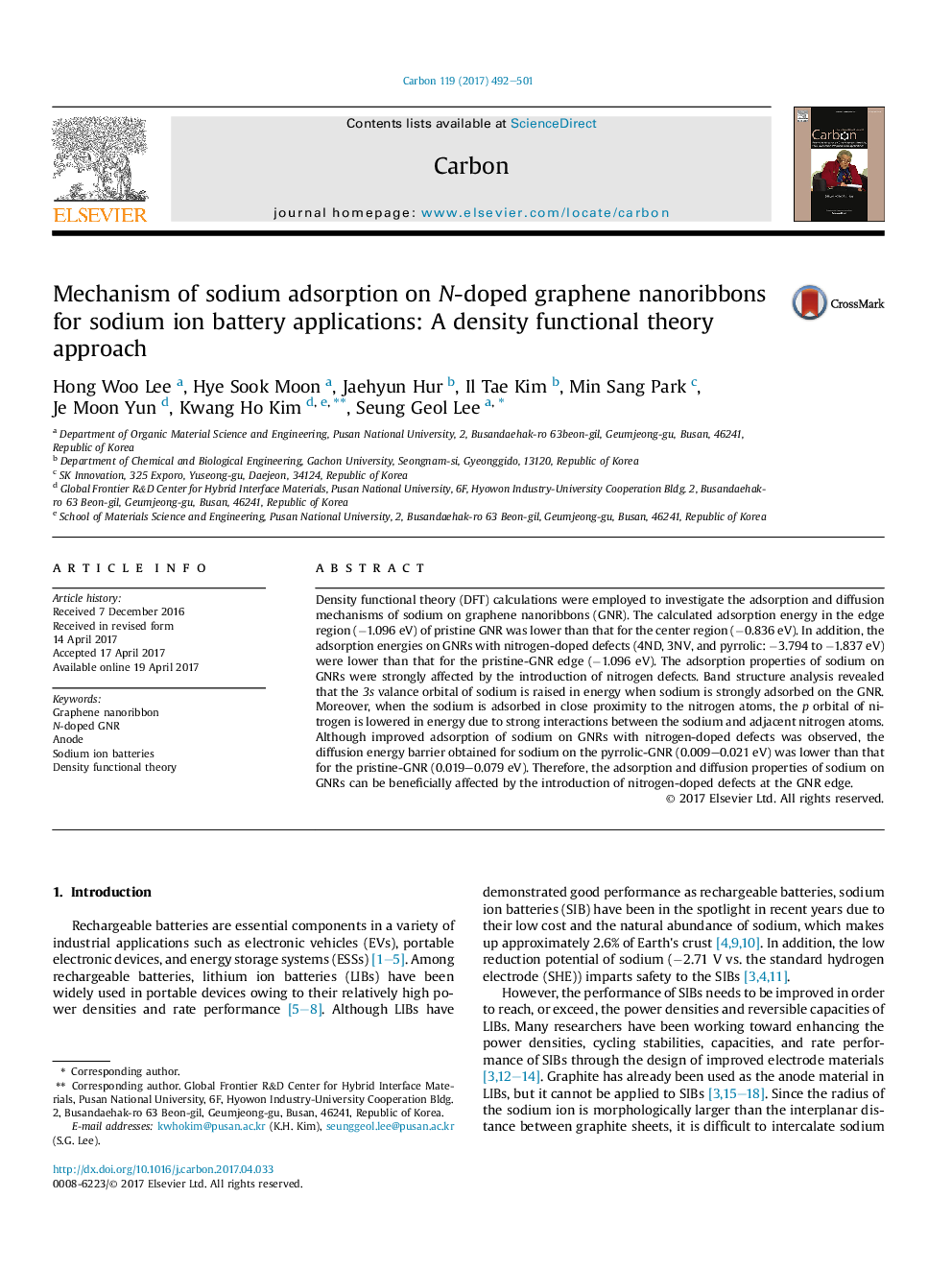| Article ID | Journal | Published Year | Pages | File Type |
|---|---|---|---|---|
| 5432135 | Carbon | 2017 | 10 Pages |
Density functional theory (DFT) calculations were employed to investigate the adsorption and diffusion mechanisms of sodium on graphene nanoribbons (GNR). The calculated adsorption energy in the edge region (â1.096 eV) of pristine GNR was lower than that for the center region (â0.836 eV). In addition, the adsorption energies on GNRs with nitrogen-doped defects (4ND, 3NV, and pyrrolic: â3.794 to â1.837 eV) were lower than that for the pristine-GNR edge (â1.096 eV). The adsorption properties of sodium on GNRs were strongly affected by the introduction of nitrogen defects. Band structure analysis revealed that the 3s valance orbital of sodium is raised in energy when sodium is strongly adsorbed on the GNR. Moreover, when the sodium is adsorbed in close proximity to the nitrogen atoms, the p orbital of nitrogen is lowered in energy due to strong interactions between the sodium and adjacent nitrogen atoms. Although improved adsorption of sodium on GNRs with nitrogen-doped defects was observed, the diffusion energy barrier obtained for sodium on the pyrrolic-GNR (0.009-0.021 eV) was lower than that for the pristine-GNR (0.019-0.079 eV). Therefore, the adsorption and diffusion properties of sodium on GNRs can be beneficially affected by the introduction of nitrogen-doped defects at the GNR edge.
Graphical abstractDownload high-res image (387KB)Download full-size image
